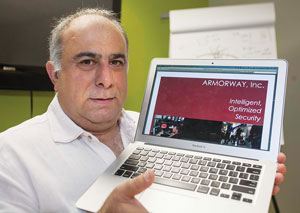At L.A.’s prominent research universities, scientists are finding new ways of diagnosing and treating illnesses, keeping society safer and turning algae into oil. And when the experiments bear fruit, they spin off companies.
This special section presents noteworthy examples of companies that spun off from university labs. Among them is L-Nutra, which grew out of research at USC. The company’s medicinal foods could one day be used to slow the effects of aging and treat cancer. As noted below, UCLA and Caltech have also produced remarkable new technologies.
USC: The USC Stevens Center for Innovation helps scientists turn their work into commercial products. One of the companies to spin out of USC this year is Armorway Inc., which develops software that plans randomized security patrols. It is being used at Los Angeles International Airport. L-Nutra was also spun out of USC to develop medicinal food for humans that, when tested on animals, helped with anti-aging and cancer treatments.
UCLA: Examples of success stories include Lyxia Corp., which uses algae to produce oil. ImaginAb Inc. is a medical imaging company that helps oncologists make better diagnoses. Armagen Technologies Inc. researches treatments for diseases that affect the brain and central nervous system. “With a push of entrepreneurship on campus, we’re starting to report an increase in startups,” said Thomas Lipkin, assistant director of entrepreneurship and new ventures at UCLA’s Office of Intellectual Property.
CALTECH: The school may be on a cramped campus, but its reputation for spinning off companies is formidable. “Considering our small size, no other institution comes close to the number of startups created per faculty member or per student,” said Case Cortese, the school’s associate director of technology transfer. Examples include Epetri Inc., which makes a biomedical engineering system, and Neurorecovery Technologies Inc., which is developing a spinal cord implant to restore movement.

